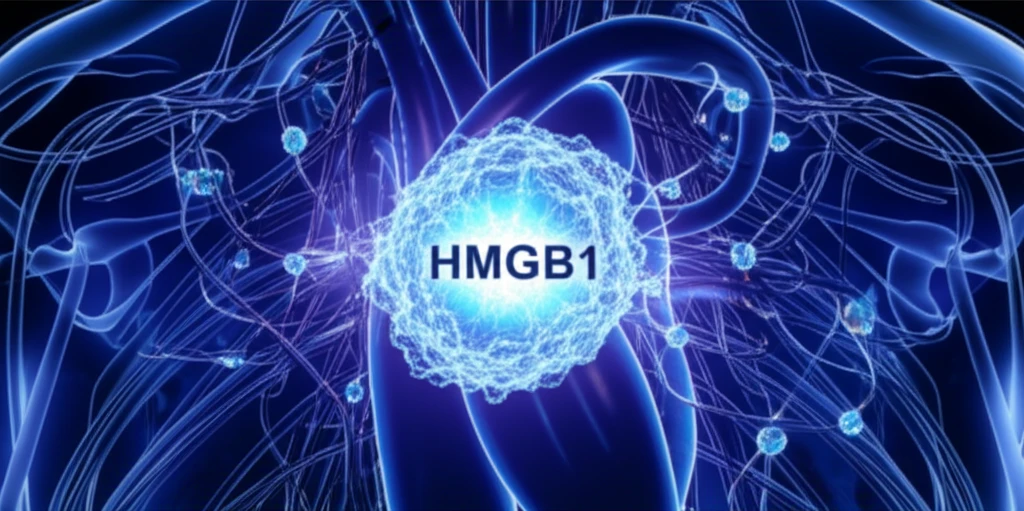
Unlocking the Mystery of Pulmonary Hypertension: How HMGB1 Holds the Key
"New research reveals the critical role of HMGB1 in the development of pulmonary hypertension, offering potential new targets for treatment and prevention."
Pulmonary hypertension (PH) is a devastating disease characterized by the narrowing of pulmonary arteries, leading to right heart failure and ultimately, death. While the exact causes of PH remain elusive, inflammation and the mobilization of intracellular calcium are known contributors. High-mobility group box 1 (HMGB1), a DNA chaperone with diverse cellular functions, has recently emerged as a critical player in PH development.
HMGB1, traditionally known for its role in DNA repair and replication within the cell nucleus, takes on a different persona when it ventures outside. Released into the cytoplasm or extracellular space, HMGB1 acts as a damage-associated molecular pattern (DAMP), triggering a cascade of cellular responses, including inflammation and immunity. This dual nature of HMGB1 has sparked intense research into its role in various diseases, including pulmonary hypertension.
Recent studies have highlighted HMGB1's involvement in PH, with researchers exploring its potential as a therapeutic target. Now, a groundbreaking study sheds new light on the mechanistic importance of HMGB1 in pulmonary hypertension, revealing its intricate interplay with toll-like receptor 4 (TLR4), calcium signaling, and the Akt pathway. This discovery paves the way for novel strategies to combat this life-threatening condition.
How Does HMGB1 Contribute to Pulmonary Hypertension?

The new research paper uncovers a cascade of events initiated by HMGB1 that leads to the progression of pulmonary hypertension. The study, conducted on rat models, reveals that HMGB1 levels surge in lung tissue and blood plasma following chronic hypoxia exposure and monocrotaline treatment, two common methods for inducing PH in animals. This surge prompts HMGB1 to translocate from the nucleus to the cytoplasm in pulmonary artery smooth muscle cells (PASMCs), a process seemingly mediated by the production of reactive oxygen species (ROS).
- HMGB1 Release: Increased levels of HMGB1 are observed in lung tissue and blood plasma under PH-inducing conditions.
- Cellular Translocation: HMGB1 moves from the nucleus to the cytoplasm in PASMCs.
- Calcium Mobilization: HMGB1 triggers calcium signaling within PASMCs.
- TLR4 and TRPC Involvement: This signaling is dependent on TLR4 and TRPC channels.
Implications for Future Therapies
These findings highlight the mechanistic importance of HMGB1 in pulmonary hypertension. By revealing its role in TLR4- and TRPC-associated calcium influx, and Akt phosphorylation-driven PASMC migration, this research identifies potential new targets for therapeutic intervention. Future research efforts should focus on developing HMGB1 inhibitors or strategies to disrupt its interaction with TLR4 and downstream signaling pathways. This could pave the way for more effective treatments for pulmonary hypertension.
